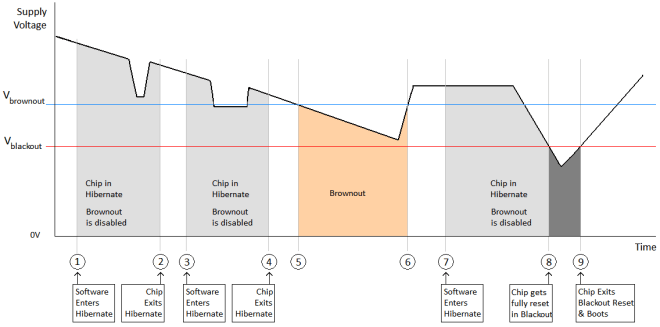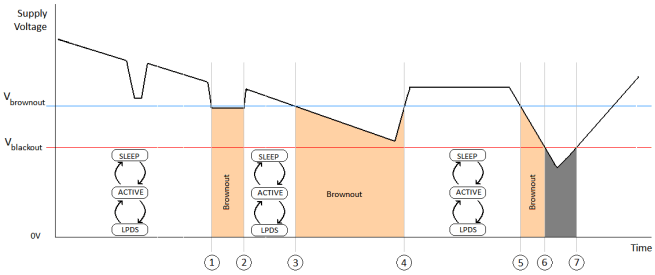JAJSHT5D February 2019 – May 2021 CC3135MOD
PRODUCTION DATA
- 1 特長
- 2 アプリケーション
- 3 概要
- 4 機能ブロック図
- 5 Revision History
- 6 Device Comparison
- 7 Terminal Configuration and Functions
-
8 Specifications
- 8.1 Absolute Maximum Ratings
- 8.2 ESD Ratings
- 8.3 Recommended Operating Conditions
- 8.4 Current Consumption Summary: 2.4 GHz RF Band
- 8.5 Current Consumption Summary: 5 GHz RF Band
- 8.6 TX Power Control for 2.4 GHz Band
- 8.7 TX Power Control for 5 GHz Band
- 8.8 Brownout and Blackout Conditions
- 8.9 Electrical Characteristics for DIO Pins
- 8.10 WLAN Receiver Characteristics
- 8.11 WLAN Transmitter Characteristics
- 8.12 BLE and WLAN Coexistence Requirements
- 8.13 Reset Requirement
- 8.14 Thermal Resistance Characteristics for MOB Package
- 8.15 Timing and Switching Characteristics
- 8.16 External Interfaces
- 9 Detailed Description
- 10Applications, Implementation, and Layout
- 11Environmental Requirements and SMT Specifications
- 12Device and Documentation Support
- 13Mechanical, Packaging, and Orderable Information
8.8 Brownout and Blackout Conditions
The device enters a brownout condition when the input voltage dips below VBROWNOUT (see Figure 8-4 and Figure 8-5). This condition must be considered during design of the power supply routing, especially if operating from a battery. High-current operations, such as a TX packet or any external activity (not necessarily related directly to networking) can cause a drop in the supply voltage, potentially triggering a brownout condition. The resistance includes the internal resistance of the battery, contact resistance of the battery holder (four contacts for a 2× AA battery), and the wiring and PCB routing resistance.
When the device is in the Hibernate state, brownout is not detected; only blackout is in effect during the Hibernate state.
 Figure 8-4 Brownout and Blackout Levels (1 of 2)
Figure 8-4 Brownout and Blackout Levels (1 of 2)
 Figure 8-5 Brownout and Blackout Levels (2 of 2)
Figure 8-5 Brownout and Blackout Levels (2 of 2)
In the brownout condition, all sections of the CC3135MOD (including the 32-kHz RTC) shut down except for the Hibernate module, which remains on. The current in this state can reach approximately 400 µA. The blackout condition is equivalent to a hardware reset event in which all states within the device are lost.
Table 8-1 lists the brownout and blackout voltage levels.
| CONDITION | VOLTAGE LEVEL | UNIT |
|---|---|---|
| Vbrownout | 2.1 | V |
| Vblackout | 1.67 | V |